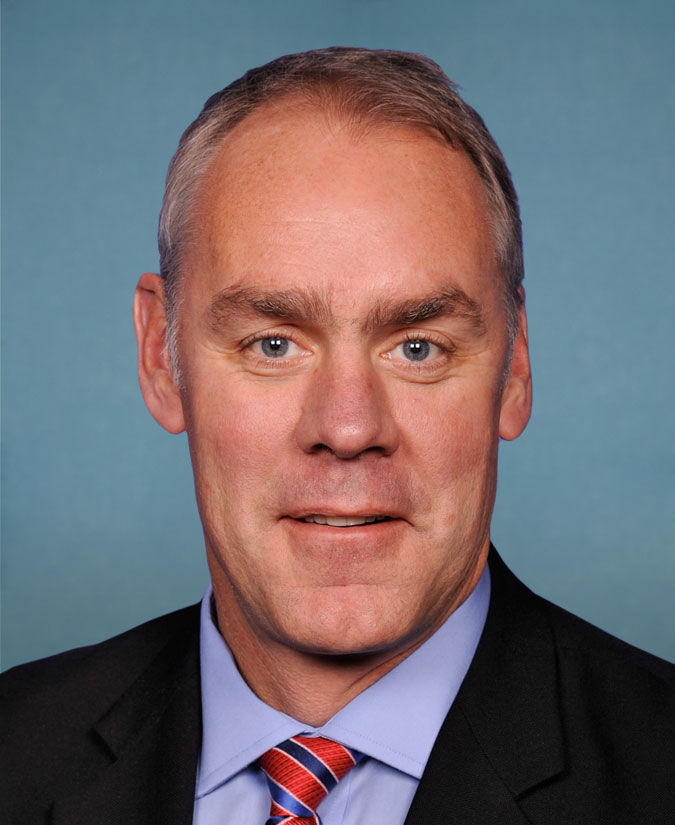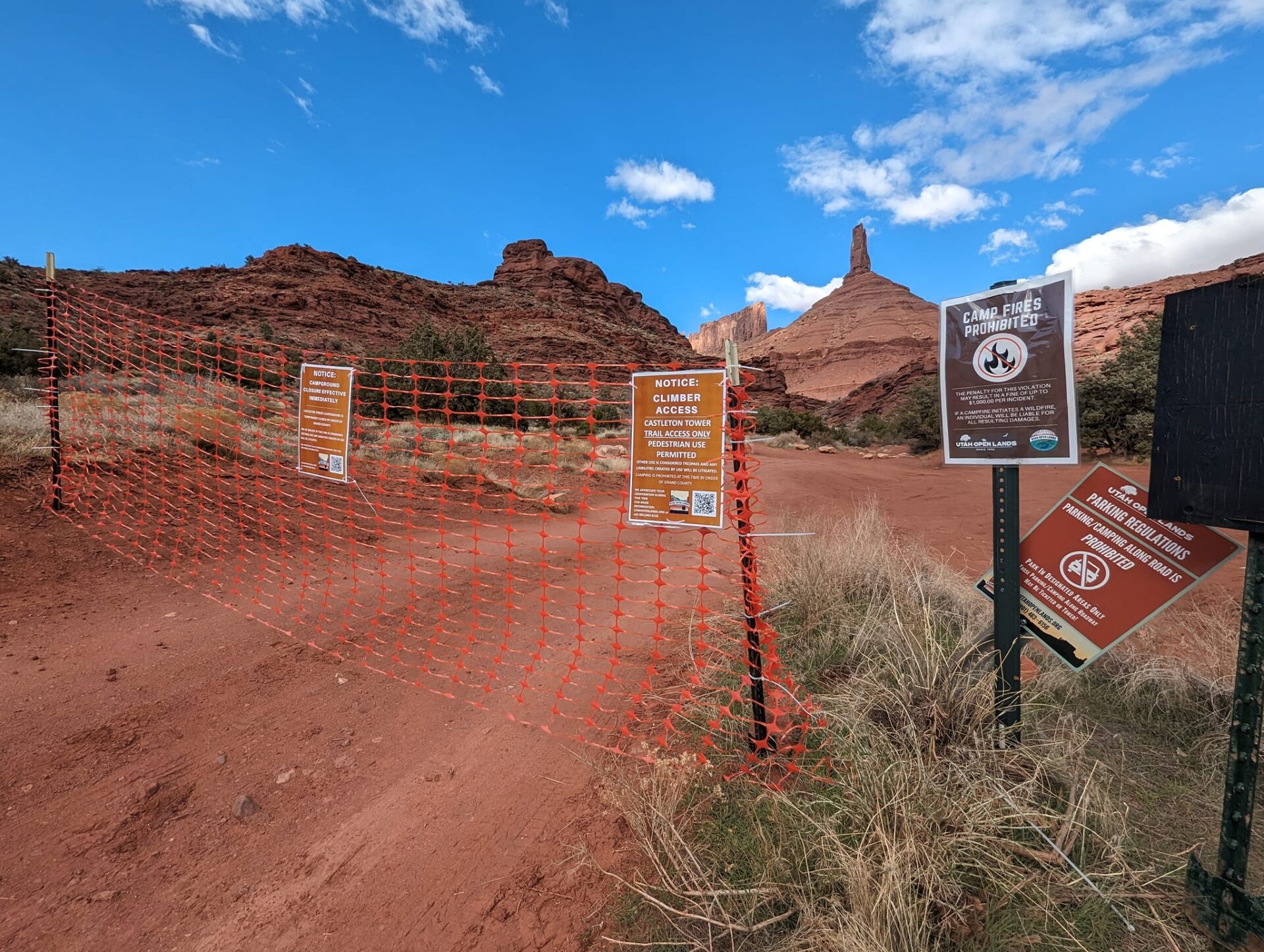America’s top federal land manager is calling on President Donald Trump to reduce the size of the 1.35-million-acre Bears Ears National Monument, although he hasn’t yet offered any specific ideas about what the redrawn boundaries should look like.
U.S. Interior Secretary Ryan Zinke issued an interim report last weekend which suggests that Trump should revise the monument’s size and shape through the “appropriate authority,” including the federal Antiquities Act of 1906. He also suggested that Congress should take action to protect some areas within the new monument, while giving tribal nations the power to co-manage designated cultural sites within a revised Bears Ears site.
“There is no doubt that it is drop-dead gorgeous country and that it merits some degree of protection, but designating a monument that – including state land – encompasses almost 1.5 million acres where multiple-use management is hindered or prohibited is not the best use of the land and is not in accordance with the intention of the Antiquities Act,” he said in a statement.
Former President Barack Obama invoked the Antiquities Act in December 2016 to create the monument on existing federal lands in San Juan County, stretching roughly from Goosenecks State Park in the south to Dead Horse Point in the north, and centered around the namesake buttes near Blanding. Obama’s proclamation said it’s in the public interest to protect the Bears Ears’ cultural and archaeological resources, including ancient cliff dwellings, rock art, traditional hunting and gathering areas, and ceremonial sites that are sacred to many tribes throughout the Four Corners region.
Trump ordered a review of his predecessor’s proclamation in April, as well as a much broader examination of all Antiquities Act designations since January 1996 that are at least 100,000 acres in size. That broader review also extends to any monument that Zinke deems to have been created without “appropriate” public input.
Not surprisingly, word of Zinke’s interim report and recommendations drew mixed reactions from officials and residents in San Juan and Grand counties.
San Juan County Commissioner Phil Lyman said that he and other commissioners are grateful for the work that has gone into the Bears Ears review so far, noting that the Trump administration is still in the early stages of the review process. However, the main recommendation that has emerged to date is not the one that the commissioners were seeking: Lyman’s board formally asked the new administration to do away with the new monument altogether.
“Since it wasn’t rescinded at this point, we would like to see it dramatically reduced in size, and do something specific and meaningful, rather than something broad and general,” Lyman said.
The interim recommendations did not surprise Moab resident and Utah Sierra Club President Marc Thomas, who believes that Zinke and Trump ultimately lack the ability to rewrite a past Antiquities Act designation.
“I just don’t think that there’s any statutory authority for what’s being done right now,” he said.
Thomas believes that Trump signaled the direction his administration would take during the review period when the president said, “This (monument proclamation) never should have happened.”
“I’ll throw the words right back at him,” he said. “This (review) never should have happened.”
Interim report follows secretary’s visit to region
Zinke issued his interim report just over one month after he embarked on a four-day trip to Utah that took him to Bears Ears and the Grand Staircase-Escalante National Monument in Kane and Garfield counties. Along the way, he met with state, local and tribal stakeholders, and toured the monument and adjacent areas by helicopter, car, foot and horseback.
To date, Zinke has concluded that some objects within the Bears Ears should be protected under the Antiquities Act, along with sites that are important to tribal members. However, he found that it would have been “more appropriate” to identify and separate areas with significant resources, and suggested that the monument should be limited to the smallest area compatible with their protection.
Moab resident and Sierra Club Glen Canyon Group Chapter President Kay McLean said she believes that Zinke’s interim recommendations would have the effect of fragmenting landscapes and sacred sites within the new boundaries.
“You can’t preserve an area by subdividing and saying it’s preserved or sacred then,” McLean said. “That’s a farce.”
McLean compared the idea to a situation where a person gives someone else a couple of pretty puzzle pieces and then asks them to assemble an entire puzzle.
“It would not do the job, and that is just what we would expect from a Lyman or a (Rep. Rob Bishop) or a politician that is so devoted to a single interest,” she said.
Thomas said that numerous sites and artifacts in need of preservation are scattered across the new monument’s boundaries.
“The special things that they’re trying to protect are everywhere,” he said.
Zinke said protections that existed before last December should be further considered. More than 380,000 acres inside the new monument were already protected as federally designated Wilderness Study Areas, and nine other areas – including Canyon Rims south of Moab – were previously designated as Special Recreation Management Areas.
In cases where he believes that certain resources should remain protected, Zinke suggested that the current management framework is too restrictive.
Lyman agrees.
“The restrictions that come with federal management are onerous,” he said.
Lyman said that some of the constituents he’s heard from are concerned about the national and international attention that a monument designation brings to an area, along with potential impacts that come with increased visitation. There are places within the Bears Ears where county officials and other monument opponents would welcome visitors, Lyman said, but they would prefer not to see other areas become tourist attractions.
“It’s just inconsistent to say something is legitimately sacred and you want to put it under a national monument designation (that draws more visitors),” he said.
Supporters, opponents disagree about Antiquities Act powers
Thomas said it’s his understanding that Congress specifically indicated it didn’t want any administrative oversight of national monuments when it passed the Federal Land Management Policy Act of 1976. Based on his reading of the law, Congress actually strengthened a president’s powers to declare national monuments under the act.
“It is saying that the secretary can’t modify or revoke any national monument that’s been created by the Antiquities Act,” Thomas said.
Republican and Democratic presidents alike have used their authority under the law to carve out new monuments on federal lands, and Thomas said there is a clear historic precedent for Obama’s actions. In fact, he said, the designation of landscape-scale monuments dates back more than a century, to a time when former President Teddy Roosevelt created what was then Grand Canyon National Monument in 1908.
“Right off the bat, you have the precedent of a land-sized monument being created,” he said.
Lyman said there are also precedents to scale back monument boundaries; those who argue otherwise, he said, are the same legal minds who were responsible for writing Obama’s proclamation.
“I don’t think there’s a sound legal argument in existence that says a president can’t reduce the size of a national monument,” Lyman said. “The attorneys that say there is are the same ones that drafted the document … They’re not unbiased, and you’ve got to take (what they say) with the requisite grain of salt.”
McLean said the proclamation largely heeds the eastern Utah Public Lands Initiative (PLI) proposals that Bishop and other members of Utah’s congressional delegation introduced in 2016. The bill failed to gain traction in either the U.S. House or Senate, and it was only after Congress adjourned last December and the PLI withered away that Obama took action.
“My understanding is that Bears Ears pretty much followed the PLI recommendations, so the local people got what they wanted,” she said.
Thomas noted that tribal leaders who led the pro-Bears Ears campaign wanted the monument to be about 33 percent larger than it is, yet the Obama administration ultimately compromised on the final size.
“He made it much more consistent with what was in the PLI,” Thomas said.
However, Lyman called any overlap between the PLI and the Antiquities Act proclamation “laughable.”
“The Public Lands Initiative was a process, and that process (involved) some give and take,” he said.
In contrast, he said, local officials and their constituents who opposed the monument got nothing in return from the Obama administration.
“It’s a courtship that ended in a date rape,” he said. “… It’s not OK with the person on the other end of that exchange.”
San Juan County Commissioner Bruce Adams said that county commissioners did not actually support the PLI, and instead lined up behind separate recommendations that a county advisory council worked on for three years. According to Adams, those recommendations touched on everything from oil and gas rights to management of the Hole in the Rock Trail to the transfer of land where Monticello’s wastewater treatment plant is located.
Needless to say, he said, none of those recommendations were included in Obama’s proclamation.
Ultimately, Adams praised Trump and Zinke for standing up to environmental groups such as Grand Canyon Trust and celebrities like Leonardo DiCaprio who support the new monument.
“It’s just unprecedented in my opinion that something like that would happen, that the president and the secretary of the interior would stick their necks out … for a small group of local people and listen to their concerns,” Adams said. “I’m just amazed that that ever happened.”
Thomas, however, suggested that support for the monument in San Juan County is broader than the administration might suggest.
“It’s not as though San Juan County is uniform in its opposition,” he said.
By now, Thomas had hoped that supporters could retire their “I stand with Bears Ears slogan.” Yet while the controversy continues, he’s optimistic that the new monument will remain intact, based on legal and historical precedents, as well as the support of area tribes and overall public opinion.
“In the end, I believe the national monument will stand because it was legally designated and is legally defensible, and the authority to modify it lies with Congress – not the executive branch,” he said.
Interim report stops short of recommending elimination of new monument
The formal public comment period on the Bears Ears review has been extended through July 10 and will close with the overall comment period. Comments may be submitted on regulations.gov by entering “DOI-2017-0002” in the Search bar and clicking “Search.” They can also be mailed to: Monument Review, MS-1530, U.S. Department of the Interior, 1849 C Street NW, Washington, DC 20240.




